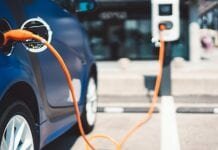
A new report has found that the European Commission’s targets for offshore wind energy generation can be met with targeted investment.
The ‘Our energy, our future’ report, produced by wind energy industry body WindEurope, examines the potential deployment of 450GW of offshore wind energy around Europe’s coasts, in accordance with the EU’s climate goals. In order to achieve carbon neutrality, the Commission has set a target of between 230GW and 450GW by 2050: a substantial increase compared to the current capacity of 20GW.
The report highlights the need for national authorities to anticipate future need for increased offshore wind infrastructure, considering the 10-year lead time on planning and developing the grid infrastructure which will be needed to optimise wind resources. It recommends increased adoption of ‘hybrid’ wind infrastructure projects administered by multiple Member States in order to spread costs and grid pressure; as well as further adoption of multiple use techniques, where offshore wind facilities can also be used by the fishing sector. In order to fully optimise wind energy to meet the EU’s targets, the report says investment in offshore grids must increase from less than €2bn in 2020 to around €8bn by 2030.
WindEurope CEO Giles Dickson said: “The EU says Europe needs at least 10 times as much offshore wind as we have today [to] meet the 2050 goal of decarbonising energy. The International Energy Agency believes offshore wind could become the number one source of power generation in Europe in the early 2040s. The report shows that it is doable and affordable. But three things need to happen: one, the offshore wind supply chain keeps growing; two, we build the grid connections; and three, we get the maritime spatial planning right.
“The wind industry is ready to expand the supply chain provided governments give long term visibility on volumes and likely revenues. The grid investments are also manageable provided governments co-ordinate them; and on maritime spatial planning, we need a long term approach with climate priorities at its heart and more multiple use, [for example] allowing fishing in offshore wind farms. Do all this, and we can deliver the scenarios that the Commission and the IEA have set.”


















